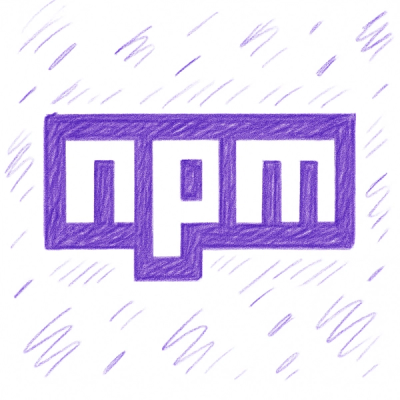
Security News
npm Adopts OIDC for Trusted Publishing in CI/CD Workflows
npm now supports Trusted Publishing with OIDC, enabling secure package publishing directly from CI/CD workflows without relying on long-lived tokens.
json-server to {{ free hosting site }}Instructions how to deploy the full fake REST API json-server to various free hosting sites. Should only be used in development purpose but can act as a simpler database for smaller applications.
Use this template-button in the right cornerCreate repository from template-button4 . Change the contents of db.json to your own content according to the json-server example and then commit your changes to git locally.
this example will create /posts route , each resource will have id, title and content. id will auto increment!
{
"posts":[
{
"id" : 0,
"title": "First post!",
"content" : "My first content!"
}
]
}

Heroku is a free hosting service for hosting small projects. Easy setup and deploy from the command line via git.
2 . Create an account on
https://heroku.com
3 . Install the Heroku CLI on your computer:
https://devcenter.heroku.com/articles/heroku-cli
4 . Connect the Heroku CLI to your account by writing the following command in your terminal and follow the instructions on the command line:
heroku login
5 . Then create a remote heroku project, kinda like creating a git repository on GitHub. This will create a project on Heroku with a random name. If you want to name your app you have to supply your own name like heroku create project-name:
heroku create my-cool-project
6 . Push your app to Heroku (you will see a wall of code)
git push heroku master
7 . Visit your newly create app by opening it via heroku:
heroku open
8 . For debugging if something went wrong:
heroku logs --tail
Heroku will look for a startup-script, this is by default npm start so make sure you have that in your package.json (assuming your script is called server.js):
"scripts": {
"start" : "node server.js"
}
You also have to make changes to the port, you can't hardcode a dev-port. But you can reference herokus port. So the code will have the following:
const port = process.env.PORT || 4000;
Not tested 100%. Same as with Heroku, will sleep after a while.
https://github.com/jesperorb/json-server-heroku.git into the URL-input and click OK.https://fallabe-pie-snake.glitch.me. And your DB will be at https://fallabe-pie-snake.glitch.me/posts
You can also use Microsoft Azure to deploy a smaller app for free to the Azure platform. The service is not as easy as Heroku and you might go insane because the documentation is really really bad at some times and it's hard to troubleshoot.
The pros are that on Azure the app will not be forced to sleep. It will sleep automatically on inactivity but you can just visit it and it will start up.
1 . Create a Microsoft Account that you can use on Azure:
https://azure.microsoft.com/
2 . Install the azure-cli:
https://docs.microsoft.com/en-us/cli/azure/install-azure-cli
This might cause some trouble, you will see. Remember to restart your terminal or maybe your computer if the commands after this does not work
3 . Login to the service via the command line and follow the instructions:
az login
You will be prompted to visit a website and paste a confirmation code
2 . Create a resource group for your projects, replace the name to whatever you want just be sure to use the same group name in all commands to come. You only have to create the resource group and service plan once, then you can use the same group and plan for all other apps you create if you like.
az group create -n NameOfResourceGroup -l northeurope
3 . Create a service plan:
az appservice plan create -n NameOfServicePlan -g NameOfResourceGroup
4 . Create the actual app and supply the service plan and resource group
az webapp create -n NameOfApp -g NameOfResourceGroup --plan NameOfServicePlan
5 . Create deployment details. A git-repo is not created automatically so we have to create it with a command:
az webapp deployment source config-local-git -n NameOfApp -g NameOfResourceGroup
6 . From the command in step 5 you should get a url in return. Copy this url and add it as a remote to your local git project, for example:
git remote add azure https://jesperorb@deploy-testing.scm.azurewebsites.net/deploy-testing.git
7 . Now you should be able to push your app:
git push azure master
You should be prompted to supply a password, this should be the pass to your account. If not, you can choose a different password at your Dashboard for Azure: https://portal.azure.com/
Choose App Services in the sidebar to the left and the choose your app in the list that appears then go to Deployment Credentials to change your password for deployment:
https://docs.microsoft.com/en-us/azure/app-service/app-service-deployment-credentials
FAQs
Simple json database to deploy to the host of your choice
We found that cow-api demonstrated a not healthy version release cadence and project activity because the last version was released a year ago. It has 1 open source maintainer collaborating on the project.
Did you know?

Socket for GitHub automatically highlights issues in each pull request and monitors the health of all your open source dependencies. Discover the contents of your packages and block harmful activity before you install or update your dependencies.

Security News
npm now supports Trusted Publishing with OIDC, enabling secure package publishing directly from CI/CD workflows without relying on long-lived tokens.

Research
/Security News
A RubyGems malware campaign used 60 malicious packages posing as automation tools to steal credentials from social media and marketing tool users.

Security News
The CNA Scorecard ranks CVE issuers by data completeness, revealing major gaps in patch info and software identifiers across thousands of vulnerabilities.